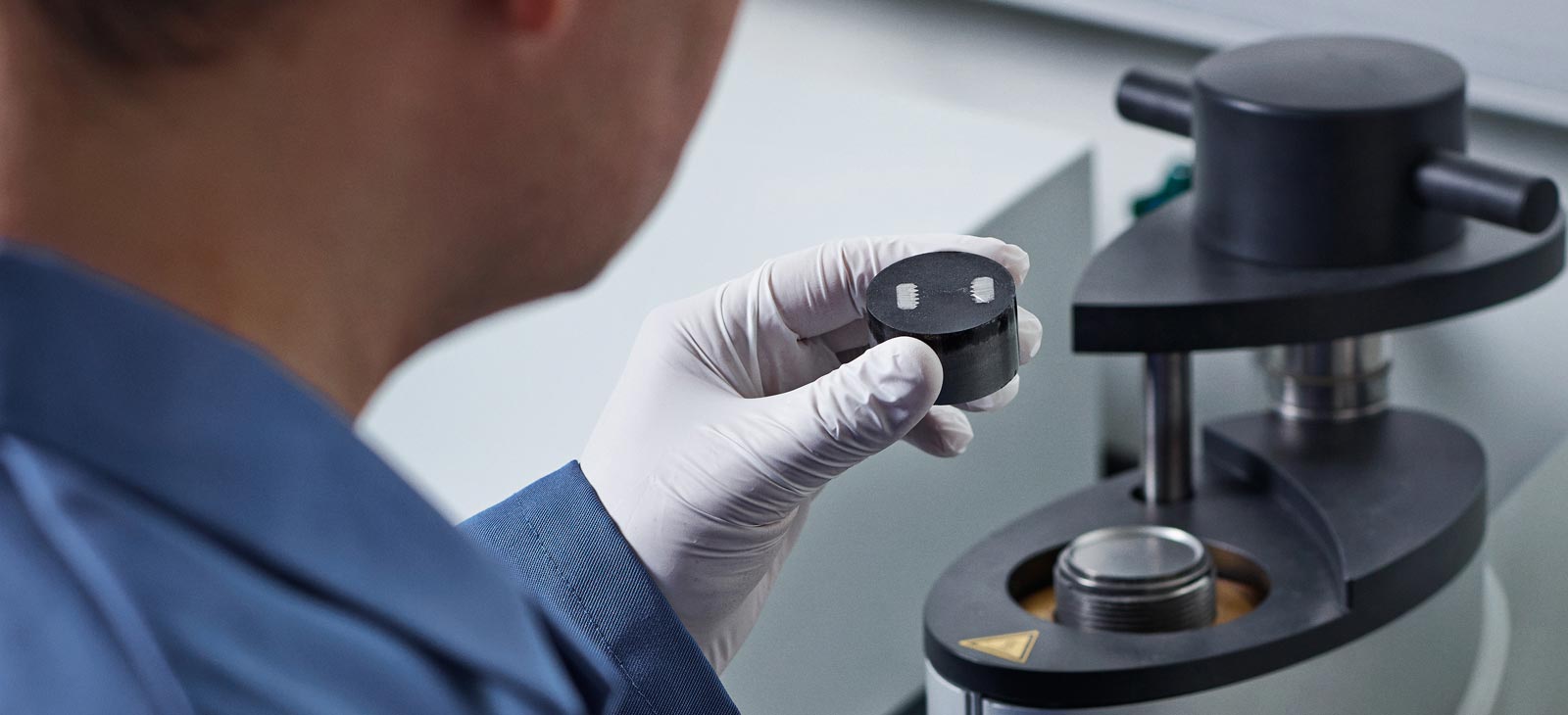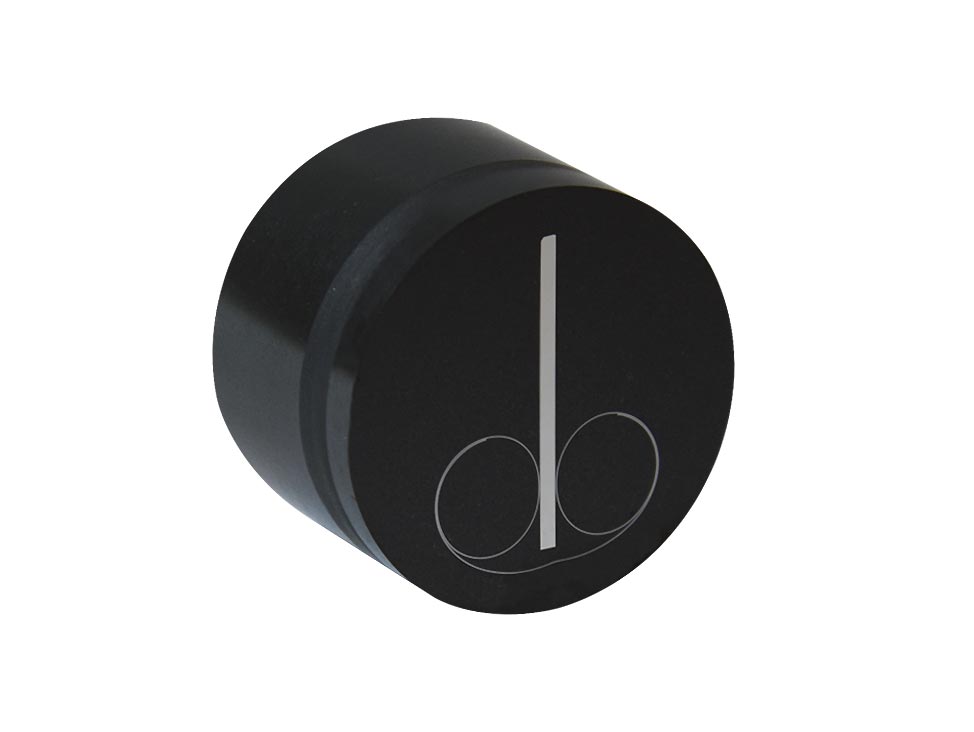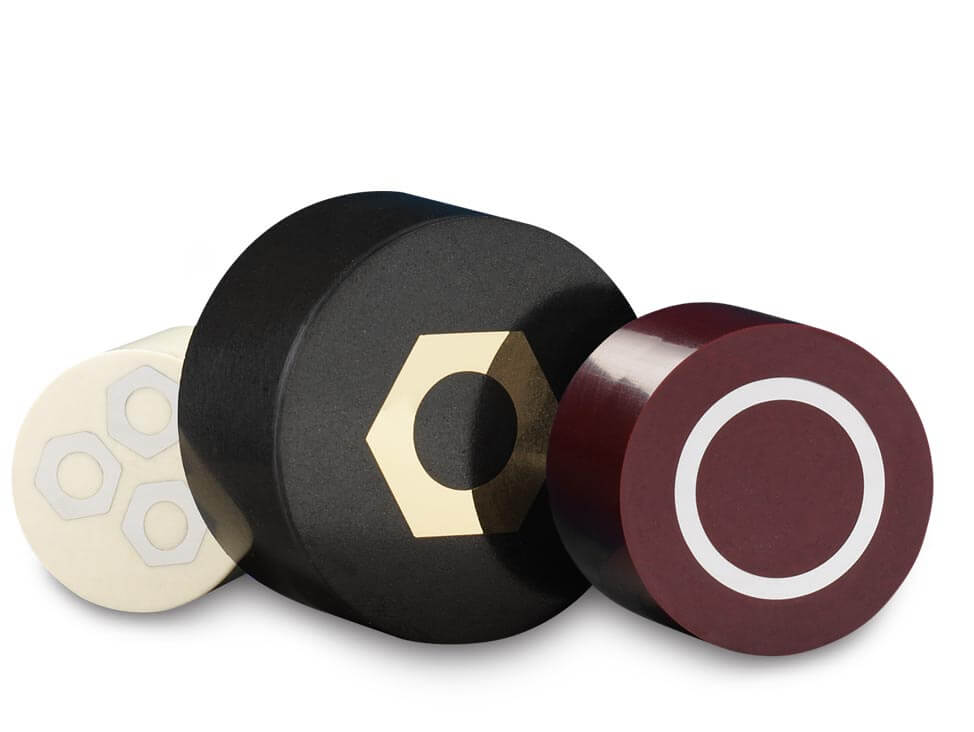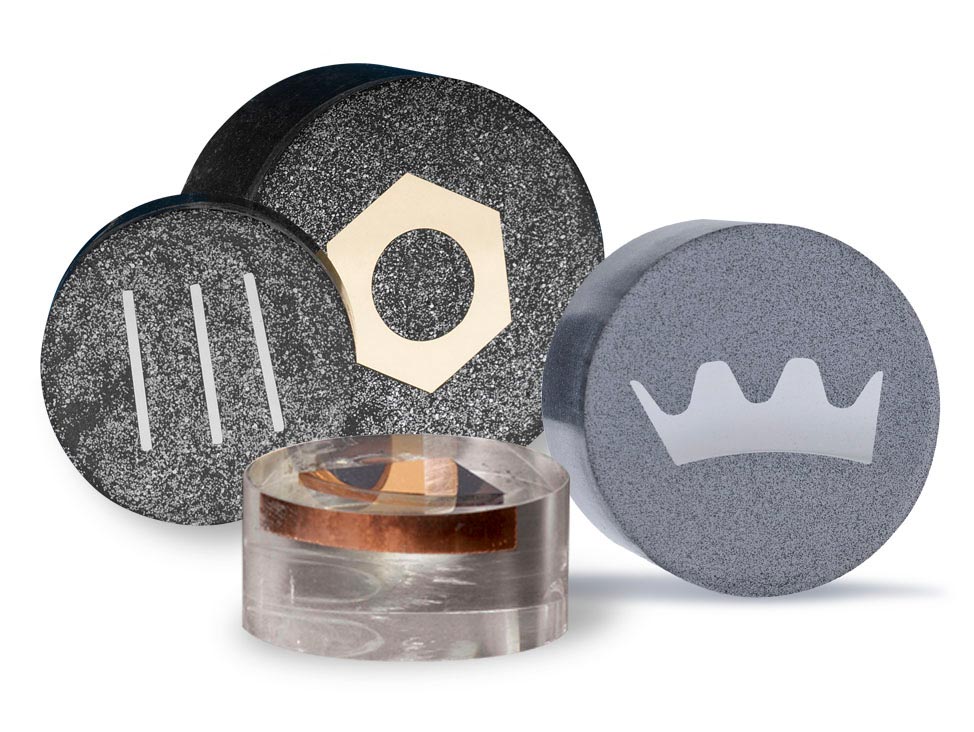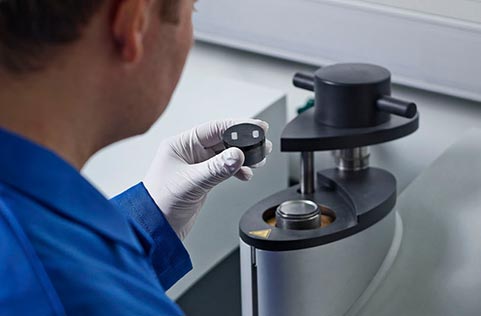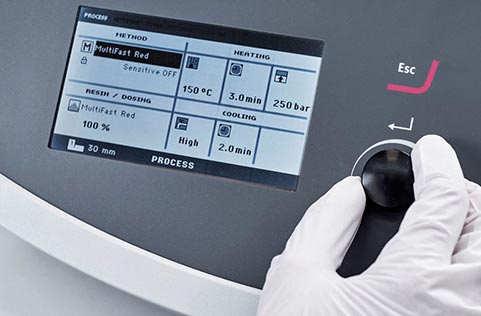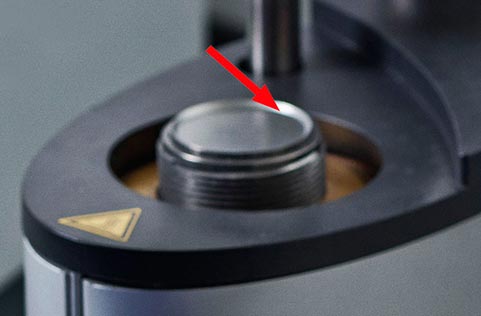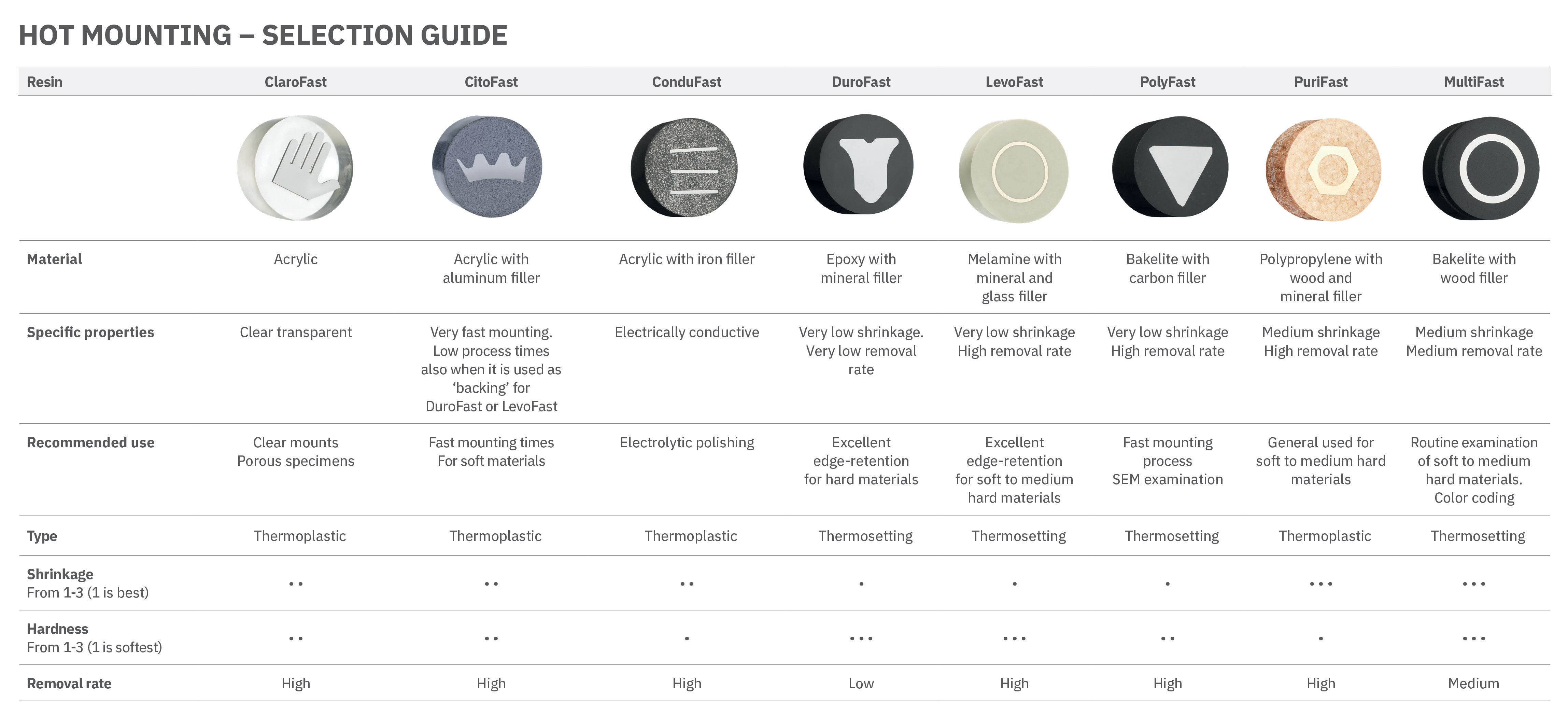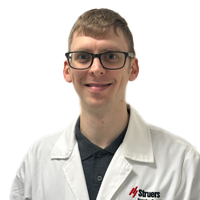Preheating
In the case of porous and/or pressure-sensitive specimens, such as minerals or electronic parts, it can be a good idea to soften the resin by heating before applying pressure. Preheating is also useful when applying thermoplastic resins.
Using Sensitive Mode, the total heating time is split into two – preheating and heating – where force is applied only during the heating phase and not during the preheating phase.
Temperature Sensitive Specimens
The temperature for the mounting process can be reduced to a minimum of 150° C for all resins. This is useful when dealing with temperature-sensitive materials. If the temperature is reduced, the recommended heating time should be increased accordingly.
Chamfered Ram
A mounted specimen may have sharp edges that can cut up preparation surfaces. This is countered by using a lower ram with chamfered edges. The chamfered lower ram also eliminates the risk of hard samples damaging the mounting unit cylinder.

